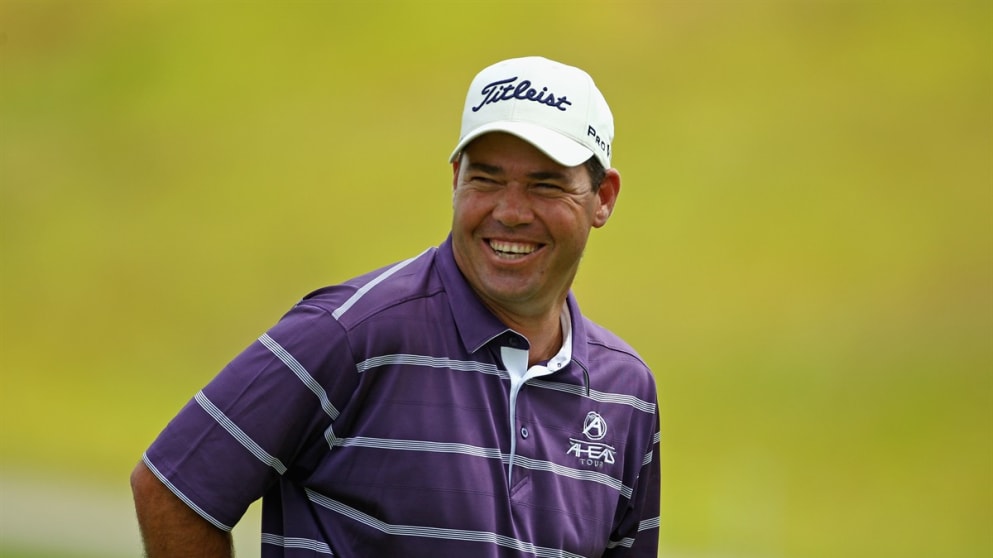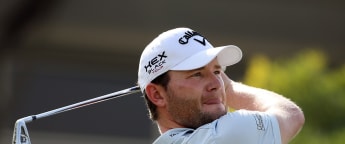South Africa’s Keith Horne may have won a quintet of titles during his 17-year Sunshine Tour career but he is still yet to find a maiden European Tour title. That could all change this week, though, at the inaugural Nelson Mandela Championship presented by ISPS Handa as the Durbanite knows the host links better than most.

Royal Durban was Horne’s home golf course as a junior and he sculpted his craft on its unique layout for more than ten years from the age of around 12.
“My whole learning curve happened here,” said Horne, who grew up and was schooled in the Durban suburb of Westville. “I played all my league matches here and basically grew into a golfer round Royal Durban.”
Overview
Sprawling and highly exposed, Royal Durban Golf Club is situated in what has to be one of the most unusual settings of any championship golf course in the world – and one wholly fitting for the start of The 2013 Race to Dubai – in the midst of a top racecourse.
Greyville Racecourse hosts South Africa’s most revered meeting, the Durban July, which was first held in 1897, but the history of horse racing in Natal stretches back to 1844 when the first race was ran close to the site of the present course.
Royal Durban, meanwhile, was first established in 1892 as the Durban Golf club, after Mr John Watt, a local bank manager, approached the town council and was granted permission to lay out a links design course on the grounds within the racecourse.
The first layout was a far cry from the professionally landscaped grounds of today. There were no actual greens, only scuffed ground with hard clay surfaces – and the fairways were not planted, the grass was merely cut by a reaper drawn by oxen.
In 1932, the club was rebuilt, a brand new clubhouse was erected to replace the original wood and iron shanty and a new course layout was designed by Bob Grimsdell.
“It’s in the middle of a racecourse which is very unusual to start with, but it is certainly not squashed into it,” said Horne. “Normally, there are five par fives – a lot of par fives considering its location – but we are only playing two of them as par fives this week.
“Generally the golf course is all about the wind but saying that it stands up pretty well even without any wind, especially with us this week playing three of the par fives as par fours – and they are going to be very handy par fours. You’re really going to have to play well on them to score.
“The course is defended by the wind and by the rough. The rough has always been up here and known to have some seriously thick sections; and one thing the Europeans won’t be used to is the kikuyu which is a very wiry, strong rough and very difficult to get out of.
“And it really does blow here, I remember vividly as a junior here some days when you couldn’t even stand up in it. I’m not sure what the forecast is this week but hopefully it doesn’t get too ugly!
“I think they’ve done a really good job despite all the rain; the greens are absolutely fantastic – the best coastal greens I have played on in South Africa. But the course is wet, it’s in a basin at the bottom of the Berea here so it gathers somewhat. But it is still playing nicely despite being pretty damp.”
Fairways
“They have narrowed the fairways quite a lot. With modern technology the ball goes a bit further now and I do remember hitting a lot more into all of these par fours and par fives – must be all the gym work – but they are narrow and the rough is up. Fortunately right now they are not running too so you can still hold them but if it dries out a bit it could be tricky. The emphasis is certainly going to be on driving this week – you have to get it in the fairway or you are really going to struggle.”
Greens
“There isn’t a lot of movement in the greens, some deceptively fast putts on them, but generally very flat. You’re not looking for much more than a cup most of the time. It’s an old-fashioned golf course, I was saying today what lovely designed greens they are, lovely shape and not to slopey. And they are quite small – not small round ones – but relatively small so you know if you hit the middle of the green you are going to have a birdie putt that’s pretty makeable.”
The Key Holes
Seventh, par four, 468 yards
“There’s most probably going to be quite a crosswind on this hole – one of the par fives that has been made into a par four – and it will play very difficult this week. But the key is if you struggle on this hole then there is plenty of time to recover from it.”
The closing holes
“Sixteen, 17 and 18 are going to be very important. You’ve got two tough par fours and then a pretty beastly closing hole now.
“Eighteen is going to be a pivotal hole in the golf tournament – obviously with it being the last hole – but it also used to be a par five and now we are playing it as a par four. It’s got a very narrow driving area with very thick rough to the left and water on the right so a very difficult tee shot if you need to make par.
“A three wood will leave you with a three iron in so you almost need to take it on with the driver. And then in terms of the approach there is out of bounds over the back of the green so it is a very tough hole and will be key in the outcome of the tournament.”






